As an experienced traveler who has had the pleasure of visiting Seoul, I know just how much this vibrant city has to offer. And that’s why I’ve put together this comprehensive itinerary to help other travelers make the most of their time in this incredible destination.
In this article, I’ll be sharing all of my favorite must-see attractions, like the Gyeongbokgung Palace and Namsan Tower, as well as cultural gems like the Bukchon Hanok Village and Jogyesa Temple. I’ll also be sharing my insider tips for finding the best food in Myeong-dong and Insadong, and my favorite Korean dishes to try. And for those looking for a night out, I’ll be recommending the best bar with views in the city.
This 5-day itinerary will provide the perfect balance of sightseeing, culture, and relaxation, and will take you to some of the most interesting historical sites like Changgyeonggung and Namsangol Hanok Village. Whether you’re a first-time visitor or a repeat traveler like me, this article will help you make the most of your time in Seoul and show you why this city deserves to be on your travel bucket list.
Ready to explore Seoul? Here is our detailed itinerary, to help you start planning your ultimate trip to Seoul with epic tourist attractions.
Table of Contents
- Seoul Itinerary: 5 Days in Seoul
- Day 1 of 5 – Seoul Itinerary
- Changgyeonggung Palace
- Bukchon Hanok Village
- Ikseon-dong
- Jongmyo Shrine
- Myeong-dong night markets
- Day 2 of 5 – Seoul Itinerary
- Namsangol Hanok Village
- Namsan Mountain Park
- Namsan Seoul Tower
- Itaewon-dong
- Namdaemun Market
- Day 3 of 5 – Seoul Itinerary
- Traditional Korean Dress
- Gyeongbokgung Palace
- National Palace Museum & Folk Museum
- Gwanghwamun Square
- Cheonggyecheon stream
- Naksan Park
- Day 4 of 5 – Seoul Itinerary
- Gangnam Style street
- COEX Mall
- Bar Kloud
- Lotte World Tower
- Day 5 of 5 – Seoul Itinerary
- Option 1: Morning of Calm, Nami Island, Gangchon Rail Bike
- The Morning of Calm Garden
- Nami Island
- Gangchon Rail Bike
- Option 2: DMZ
- Demilitarized Zone (DMZ)
- Farewell Korean dinner
- Planning a Trip to Seoul (2023 Restrictions)
- Best time to visit Seoul
- Arrival & Getting Around Seoul
- Basics of Visiting Seoul
- Where to stay in Seoul
- Is Seoul safe?
- Is Seoul expensive?
- Frequently Asked Questions
Seoul Itinerary: 5 Days in Seoul
Experience the best of Seoul with this 5-day itinerary, which includes visits to historical sites such as Gyeongbokgung Palace and Bukchon Hanok Village, indulging in delicious Korean cuisine like delicious Korean BBQ, and taking in the stunning skyline from Namsan Tower.
Day 1 of 5 – Seoul Itinerary
Changgyeonggung Palace
Begin the day with a visit to Changgyeonggung Palace and explore the beautiful gardens and architecture. Changgyeonggung Palace was originally built in the 15th century during the Joseon Dynasty.
The palace was originally called “Suganggung,” but its name was changed to Changgyeonggung Palace in the early 20th century.
Changgyeonggung Palace is a popular tourist destination that is considered one of the “Five Grand Palaces” of the Joseon Dynasty. It is open to the public year-round, and is a great place to learn about the history and culture of South Korea.
Bukchon Hanok Village
Take a stroll through the charming streets of Bukchon Hanok Village and learn about traditional Korean culture and architecture.
Bukchon Hanok Village is a traditional Korean village located in the heart of Seoul. It is a residential area that is home to a collection of traditional Korean houses known as “hanok”. These houses are made of natural materials such as wood, stone, and tile, and are designed in the traditional Korean architectural style.
Bukchon Hanok Village is a unique and picturesque neighbourhood, which is known for its narrow, winding streets and traditional Korean houses that are nestled among modern buildings. It’s a great place for photos and souvenirs from South Korea.


Top Tip: As this is a residential area, you will find noise control officers who actively encourage everyone to keep quiet. When visiting, please be respectful and keep your voice down.
Ikseon-dong
Do a little café hopping in Ikseon-dong. Ikseon-dong is one of the loveliest places in Seoul and my favourite area of the city. It’s the ideal place for a good cup of coffee and latte art. And if you have a sweet tooth, then this is definitely the place for you. You’ll find plenty of mouthwatering desserts. The area is very photogenic.
Jongmyo Shrine
Continue the day with a visit to the Jongmyo Shrine, a UNESCO World Heritage Site, and learn about the traditional rituals of the Joseon Dynasty.
Jongmyo Shrine is a Confucian shrine that was built in the 14th century to honour the ancestral tablets of the kings and queens of the Joseon Dynasty. One of the main attraction of the Jongmyo Shrine is the Jongmyo Daeje, a ceremony that has been held annually since the 14th century to honour the spirits of the deceased kings and queens of the Joseon Dynasty.
The ceremony is a UNESCO Intangible Cultural Heritage and is considered one of the most important cultural events in South Korea.
Myeong-dong night markets
Finish the first day with a visit to Myeong-dong night markets to indulge in delicious street food and shopping. Many food vendors offer a variety of options such as seafood, meat, and desserts. I suggest trying the cheesy lobster tails and the crispy fried crabs for a unique and delicious experience.
You’ll find lots of seafood skewers and fried snacks like crispy cheese balls. I’m a huge fan of grilled squid and corndog which were both fantastic.


Day 2 of 5 – Seoul Itinerary
Namsangol Hanok Village
Take a trip to Namsangol Hanok Village and experience traditional Korean life in the heart of the city. The village was created in 1998 as part of an effort to preserve traditional Korean culture and architecture.
The village features five restored traditional Korean houses, or “hanok,” that were moved from different parts of the city and rebuilt in the village. Visitors can enter the houses and learn about traditional Korean lifestyle and culture. The village also features a traditional Korean garden, a performance stage, and a pavilion for traditional tea ceremonies.
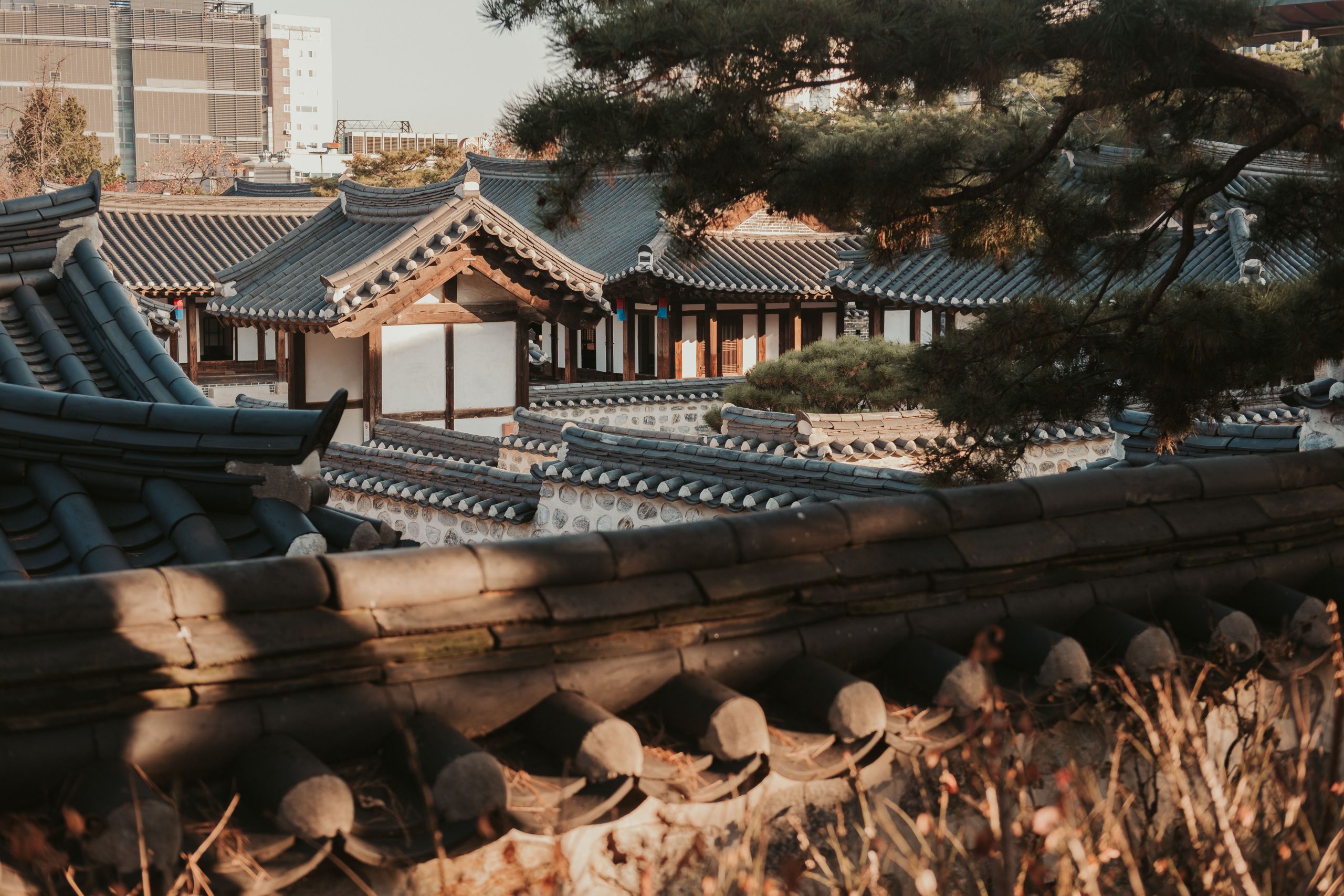
Namsan Mountain Park
Hike up Namsan Mountain Park and enjoy the beautiful views of the city. Namsan Park offers a variety of recreational activities, such as hiking, picnicking, and sightseeing.
The mountain is home to several cultural Seoul attractions, including the Namsan Tower, which offers a panoramic view of the city and Namsan Library, which houses a collection of books and historical documents.
Take a cable car to reach the summit of the mountain and explore various walking trails. Namsan Park looks especially beautiful in the autumn.
Namsan Seoul Tower
Visit the Namsan Seoul Tower, also known as the N Seoul Tower, for a panoramic view of the city. Take a cable car or hike to the top of the mountain to reach the tower.
The tower stands at 236.7 meters and offers a panoramic view of Seoul from its observation deck. Inside the tower there is a really cool elevator which takes you up to the deck.
There’s also a postbox, so you can purchase a postcard with a stamp and send yourself a cute souvenir. At the base of the tower, there’s a love lock fence, where you can leave love padlocks.
Book the tickets for the N Seoul Tower in advance!

Itaewon-dong
Explore the diverse neighbourhood of Itaewon-dong, known for its international restaurants and nightlife. You can find a variety of international cuisines such as Italian, Mexican, Indian, Turkish, and more.
Itaewon is also home to several bars and nightclubs, making it a popular spot for nightlife. I especially recommend trying the Mexican restaurant Hacienda, where we spent a couple of hours eating delicious good and having fantastic drinks. Their margaritas are superb!
Namdaemun Market
Finish the day with a visit to Namdaemun Market for delicious street food and shopping. Located in the heart of Seoul, it offers a wide range of goods, from traditional Korean crafts and clothing to modern fashion and electronics.
You can find almost anything here, from fresh produce, traditional snacks, to household items. Namdaemun Market is also known for its street food, with a variety of local delicacies available to try. If you prefer, take a local guide with you and tour the market together.
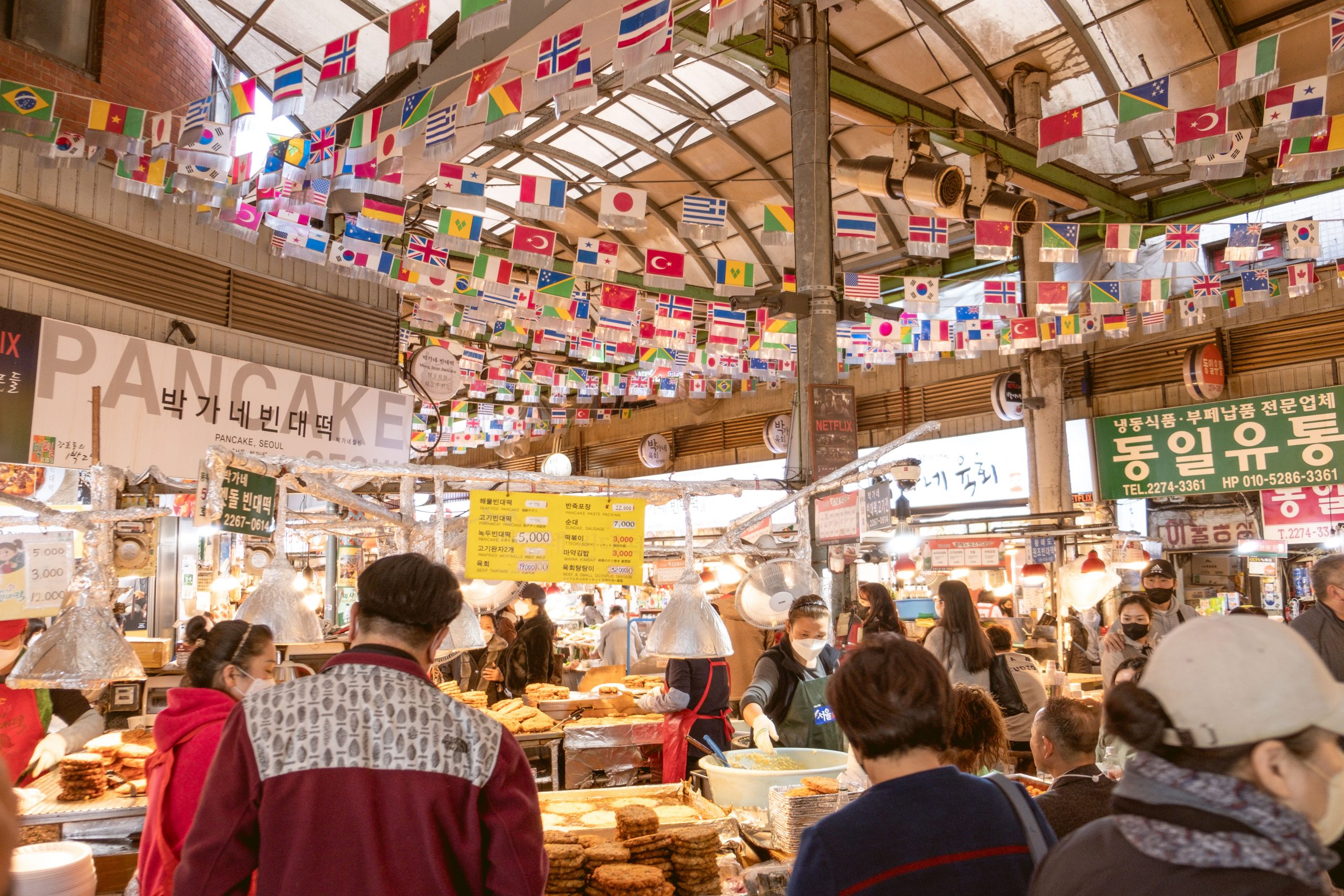
Day 3 of 5 – Seoul Itinerary
Traditional Korean Dress
Start the morning by dressing up in a traditional Korean dress called Hanbok. Book a photoshoot with a professional photographer who will take you to the Gyeongbokgung Palace for an incredible photoshoot. You will explore the palace while being photographed like you are the main royal character. My husband and I did this experience, and it was the highlight of our Seoul itinerary. We also wrote a handy Hanbok rental guide to help you with useful tips.
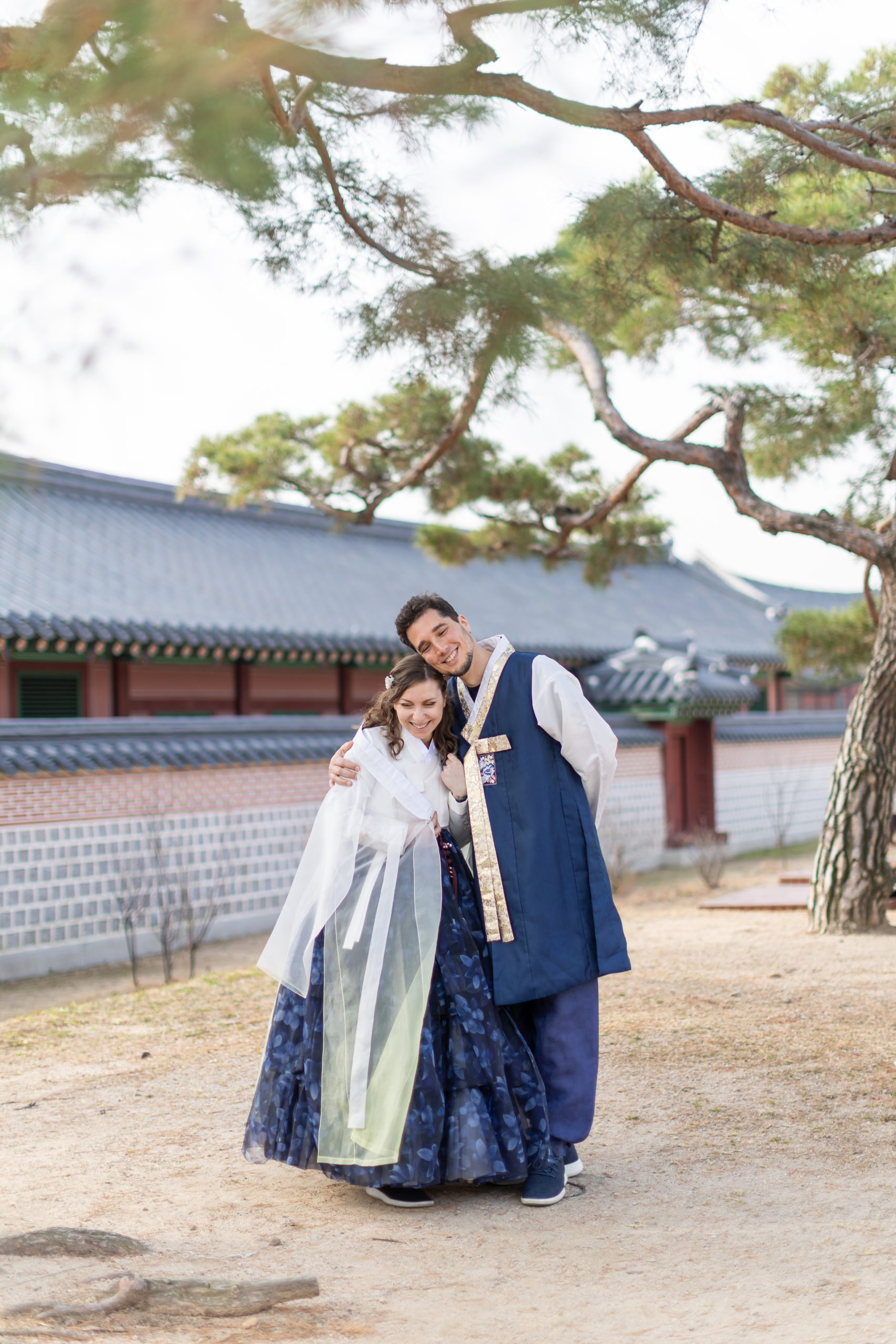
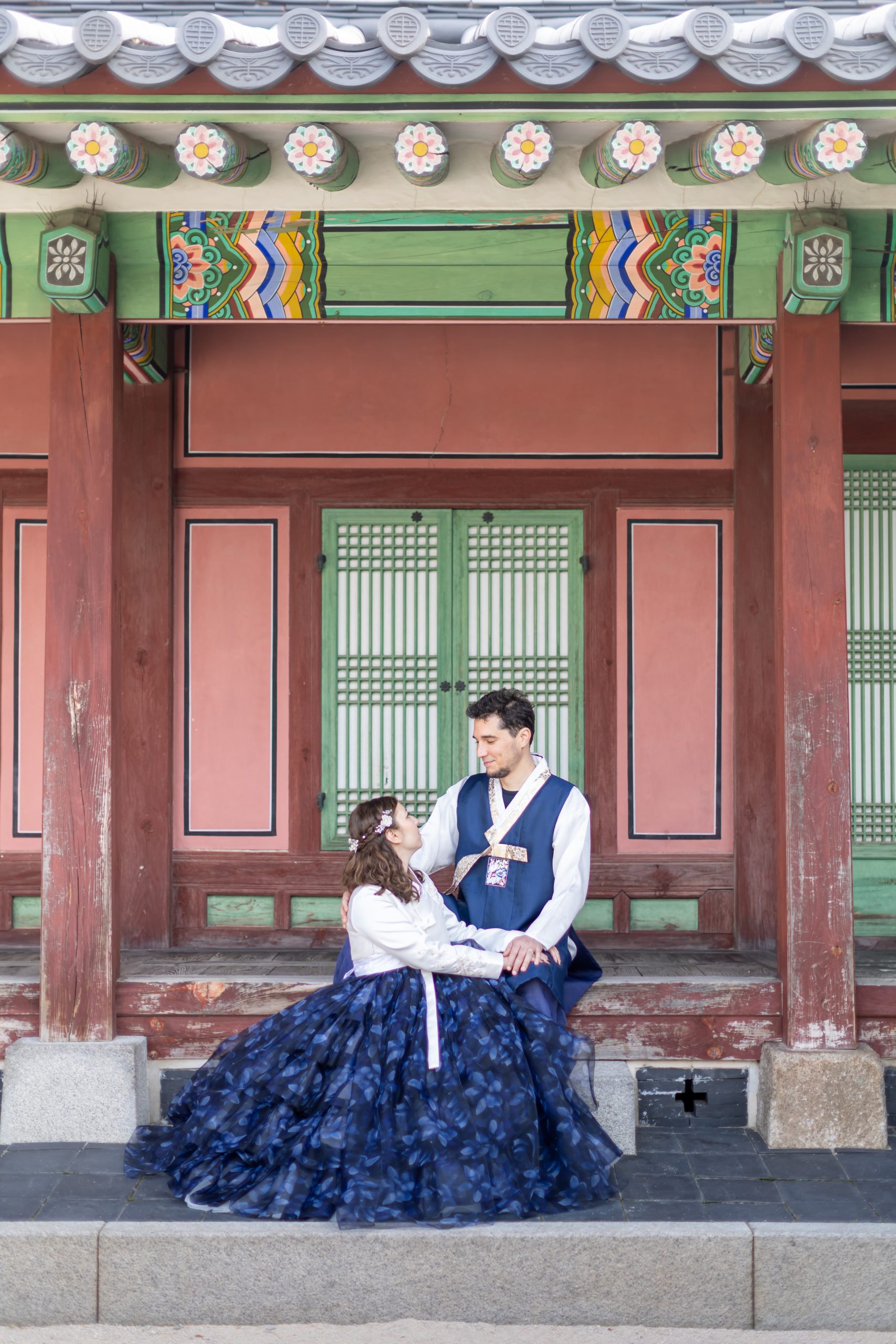
Gyeongbokgung Palace
Visit Gyeongbokgung Palace, one of the main palaces of the Joseon Dynasty. The palace was built in the 14th century during the Joseon Dynasty and served as the main royal palace for nearly 500 years.
One of the highlights of visiting Gyeongbokgung Palace is the changing of the guard ceremony, which takes place twice a day. During the ceremony, you will see traditional Korean guards dressed in colourful costumes and carrying weapons, as they march through the palace gates. Gyeongbokgung Palace is a UNESCO World Heritage site and one of the most popular tourist destinations in Seoul.
Learn about Korean history and culture at the National Palace Museum of Korea and the National Folk Museum of Korea. Both museums are located within the grounds of Gyeongbokgung Palace.
National Palace Museum & Folk Museum
The National Palace Museum of Korea houses a collection of royal artefacts and treasures from the Joseon Dynasty, including royal seals, clothing, ceramics, and calligraphy. The museum also displays replicas of the palace buildings and provides information on the palace’s history and the daily lives of the Joseon royals. It is considered as one of the most important cultural institutions in South Korea, and it’s a great place to learn about the country’s history and culture.
The National Folk Museum of Korea presents the history, culture, and daily life of the common people of Korea from prehistoric times to the end of the Joseon Dynasty.
Gwanghwamun Square
Take a stroll around Gwanghwamun Square, one of the most iconic locations in Seoul. One of the main attraction of Gwanghwamun Square is the statue of Admiral Yi Sun-sin, who is considered a national hero in Korea for his role in defending the country against Japanese invasions in the 16th century.
Cheonggyecheon stream
Walk along Cheonggyecheon stream and enjoy the peaceful atmosphere and traditional Korean bridges. Cheonggyecheon stream is an 11 km long stream that runs through the city centre, providing a green oasis in the midst of the bustling metropolis.
The stream was covered with concrete in the 1950s as part of an urban development project, but it was restored to its natural state in 2005. The restoration project involved removing the concrete and restoring the stream to its natural state, and it also involved adding new features like walkways, bridges, and gardens. If you are a fan of the series Sense8, then know that Cheonggyecheon stream is one of the filming locations.
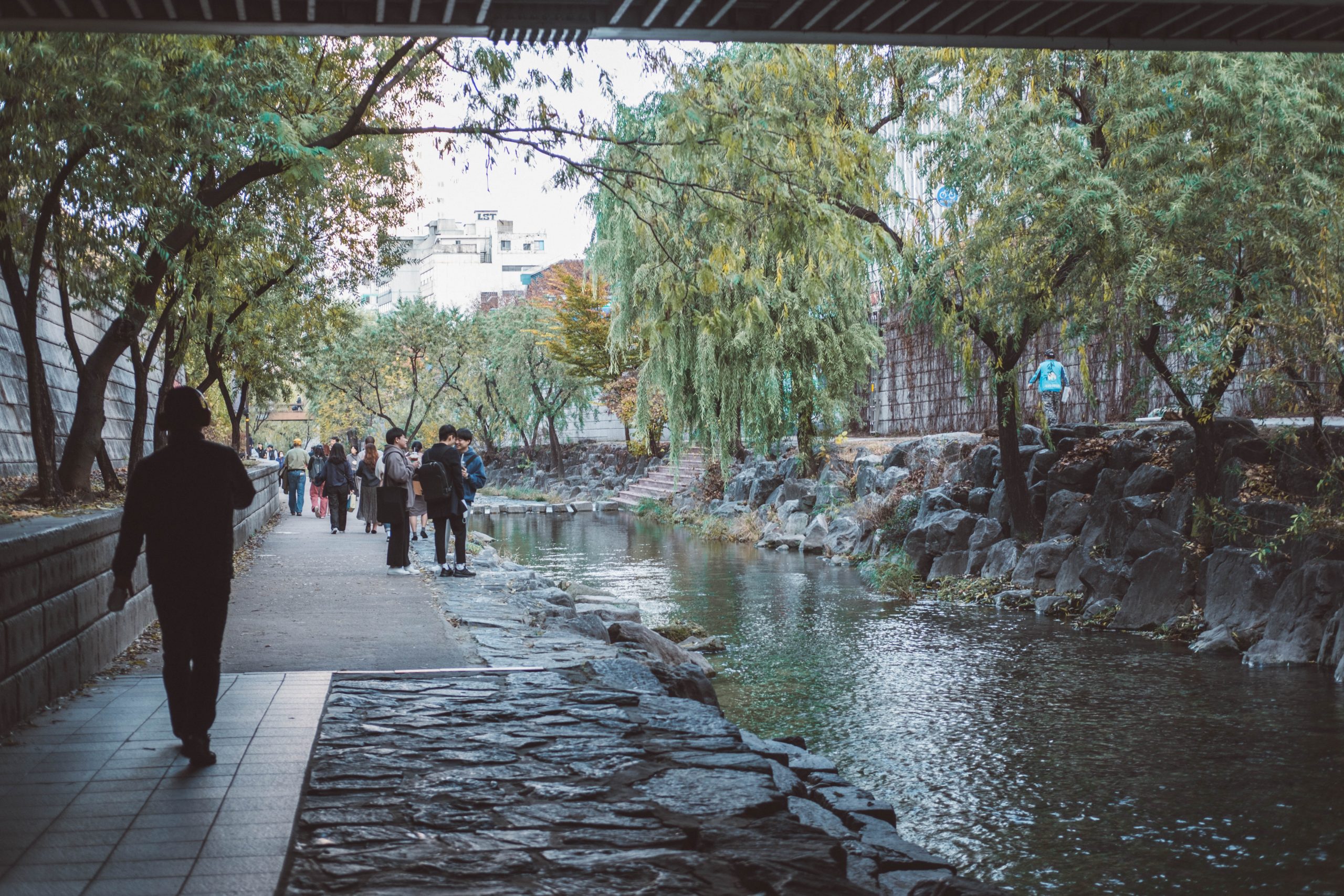
Naksan Park
End the day with a hike to Naksan Park, known for its beautiful views of the city. Naksan Park is a stunning green space with observation decks for both day and night views, although the night view is considered one of the best in Seoul. Walk long the Naksan fortress wall at dusk and admire one of the best panoramic views of Seoul.
I recommend booking the Moonlight Seoul Night Tour with a Seoul local. The guide will take you to Cheonggyecheon Stream, Gwangjang Market, Changgyeong Royal Palace and Naksan Park.
Day 4 of 5 – Seoul Itinerary
Gangnam Style street
Visit the Gangnam Style street and take a photo with the famous Gangnam Style statue. The street is named after the famous K-pop song “Gangnam Style” by PSY. The street is also home to many K-pop and music-related stores, where you can find CDs, posters and other merchandise from your favourite K-pop artists.
Explore the Gangnam station and district known for its trendy shops, restaurants, and nightlife, as well as its high-end luxury boutiques and high-rise buildings. The district has many high-end restaurants and cafés, offering a wide variety of cuisines from around the world, and it’s a perfect place for foodies. For lunch, I especially recommend an Asian fusion restaurant called Papaya Leaf.
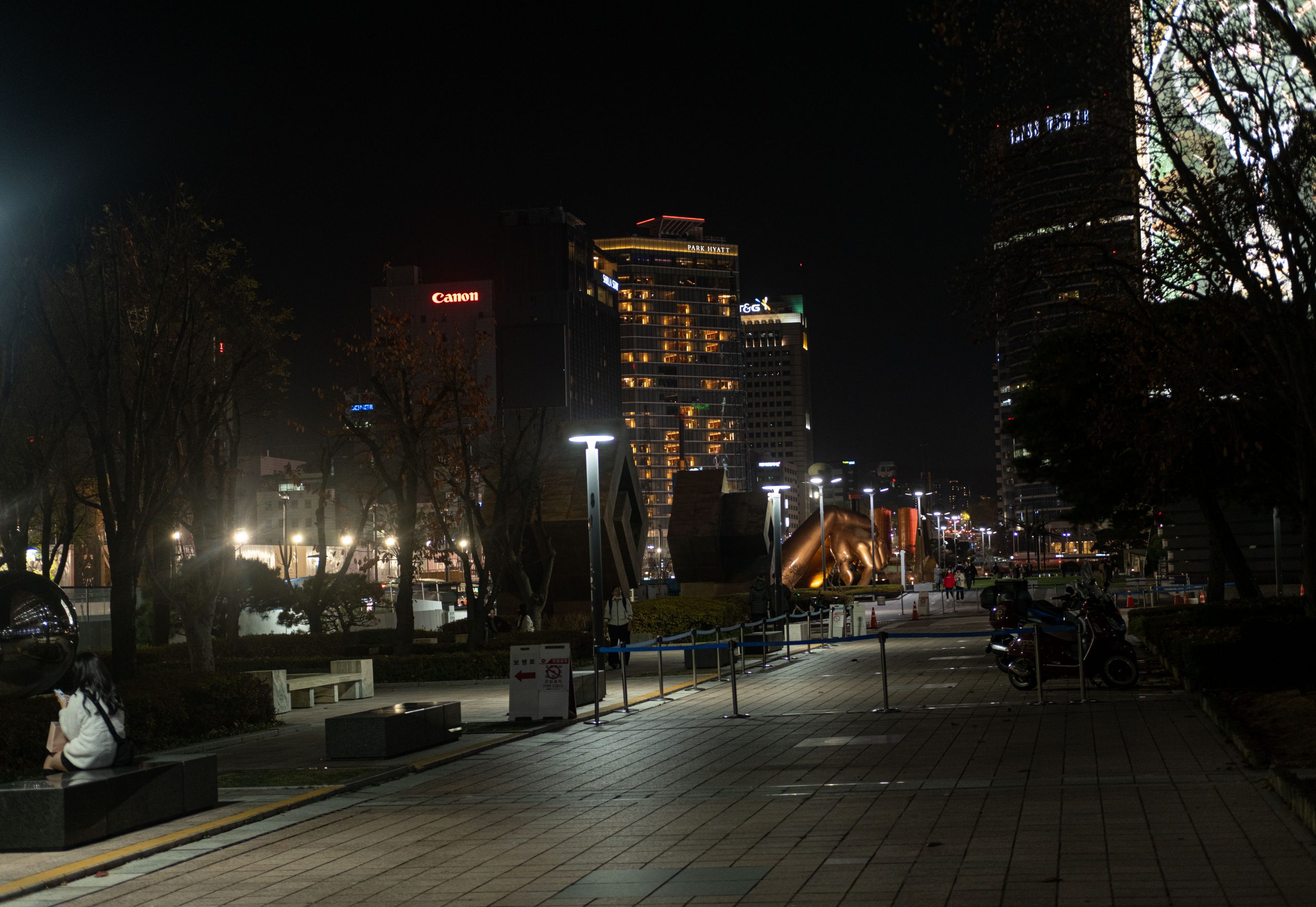
COEX Mall
Explore the COEX Mall, one of the largest underground shopping centres in Asia. COEX Mall, short for “Convention and Exhibition Center,” is located in the Gangnam district. One of the main reasons to visit COEX Mall is its size and variety of shops, with over 500 stores and restaurants, offering a wide range of products, including fashion, electronics, and beauty.
The mall is home to the COEX Aquarium, one of the largest aquariums in Asia and the COEX Cineplex, a large cinema. COEX Mall also offers a variety of cultural and educational opportunities, such as the COEX Artium, a cultural complex featuring an art gallery, library, and concert hall.
Bar Kloud
Have cool cocktails at rooftop Bar Kloud which is located on the rooftop of a building in the Gangnam district. It’s a perfect spot for watching the sunset or for enjoying the city lights at night.
The bar has a sleek, modern design, and it’s a great place to relax and unwind after a long day of sightseeing. The bar also offers a wide range of drinks, including cocktails, spirits, and beers, and it has a friendly and welcoming staff. I recommend booking a table well in advance.
Lotte World Tower
See Seoul from above at the Lotte World Tower. The tower is the fifth-tallest building in the world, standing at 555 meters (about 1800 feet) and it includes offices, hotels, residence, a shopping mall and an observatory.
The main attraction of Lotte World Tower is the observatory, located on the 123rd floor, offering a panoramic view of the city and Han River. The observatory features a Sky Deck, where you can walk on a glass-bottom floor and look straight down. Don’t forget to book your Lotte World Tower ticket in advance.
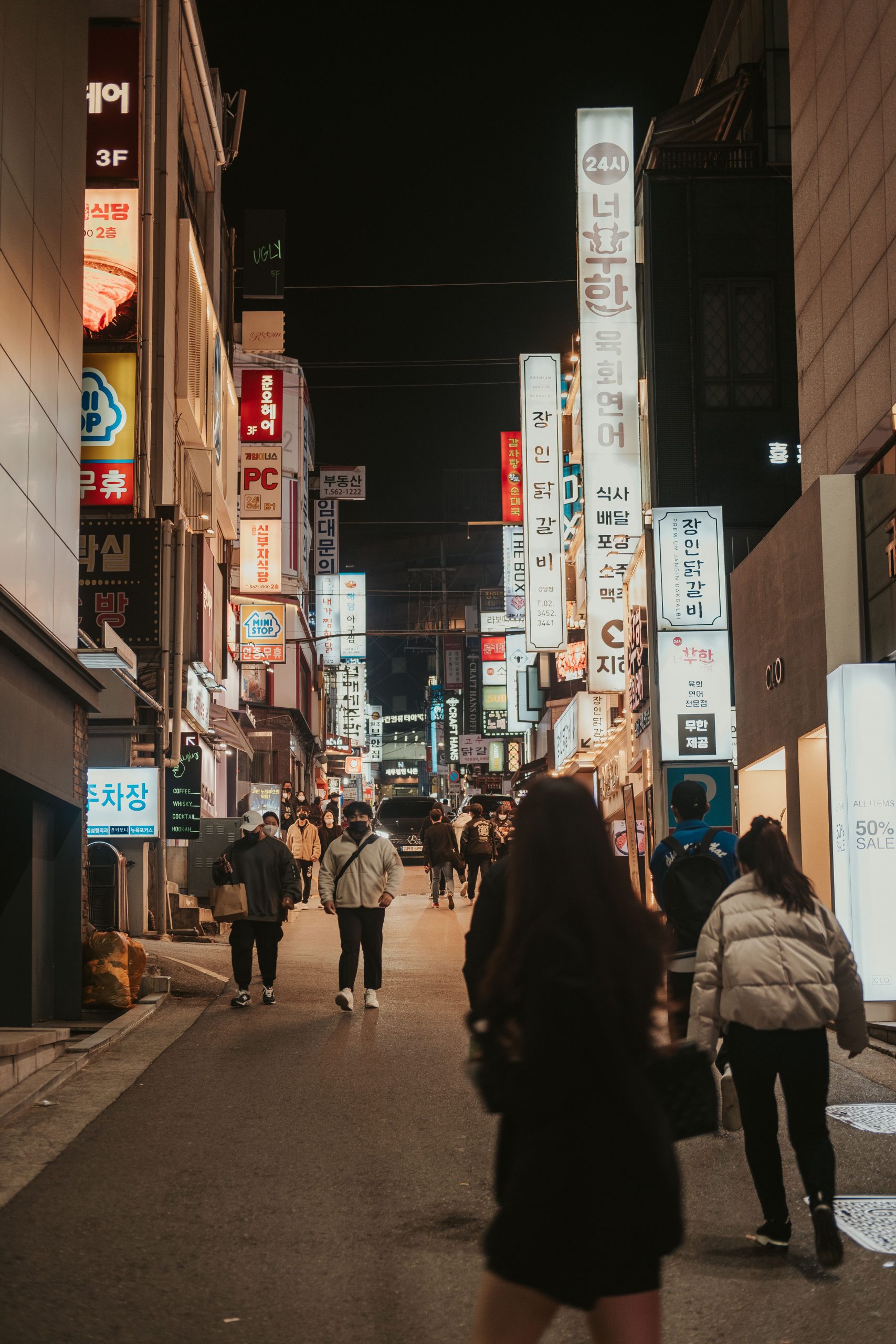

Day 5 of 5 – Seoul Itinerary
On Day 5 of your Seoul itinerary, you have the choice between two options for day trips outside of the city to discover more of South Korea’s attractions.
Option 1: Morning of Calm, Nami Island, Gangchon Rail Bike
Book a tour that will take you to three beautiful and popular destinations: Morning of Calm, Nami Island and to the Gangchon Rail Bike.
The Morning of Calm Garden
The Morning Calm Garden is a popular tourist destination located in the city of Gapyeong in Gyeonggi-do, South Korea. It is known for its picturesque gardens, peaceful atmosphere, and beautiful views of the surrounding area.The garden features a variety of different themed gardens, such as a rose garden, a rock garden, and a traditional Korean garden.
Nami Island
Nami Island is a small island located in the city of Chuncheon in Gangwon-do, South Korea. It is known for its natural beauty, recreational activities and cultural attractions. There are many reasons why you should visit Nami Island. The island is covered in lush greenery and is home to a wide variety of trees and plants, including pine, birch, and cherry blossom trees.
Gangchon Rail Bike
Gangchon Rail Bike is a recreational activity located in the city of Chuncheon in Gangwon-do, South Korea. Rent a rail bike and ride along an old train track that runs through the beautiful countryside, passing by lush green fields, forests, and a beautiful stream. Gangchon Rail Bike is also a family-friendly activity, the rail bike can accommodate up to four people, making it a great activity for families or groups of friends.

Option 2: DMZ
Book a tour to see and learn about The Demilitarized Zone (DMZ).
Demilitarized Zone (DMZ)
The Demilitarized Zone (DMZ) is a strip of land that runs along the border between North and South Korea. It is a highly militarized area. Visit the DMZ is to learn about the history of the Korean War and the ongoing tensions between North Korea and South Korea.
The DMZ serves as a symbol of the division between the two countries, and visiting the DMZ allows one to gain a more profound understanding of the political and historical context of the ongoing conflict.
It is important to note that visiting the DMZ can be a controversial and sensitive topic, and certain restrictions and regulations apply. Access to the DMZ is only possible via a guided tour and visitors are required to follow strict security protocols.
Farewell Korean dinner
Once you are back in the capital, end your epic Seoul itinerary with a nice farewell dinner at one of the top Korean BBQ restaurants in the city. Here are some Korean BBQ recommendations:
Seorae Korean BBQ: High-quality meat, this restaurant is popular among meat lovers. It’s a chain restaurant, with several locations around the city.
- Namsan Korean BBQ: Known for its wide variety of meats, including marbled beef, pork, and chicken. It is also renowned for its friendly service and great value for money.
- Yongsusan: This restaurant is known for its upscale atmosphere and high-quality meat. It’s a great option for those looking for a fine dining experience.

Planning a Trip to Seoul (2023 Restrictions)
There is no quarantine requirement for entry into South Korea.
Upon arrival in South Korea, travellers are required to complete a health questionnaire and submit it through the Quarantine COVID19 Defence (Q-Code) system.
This is mandatory for travellers from China and is highly encouraged for all other travellers to ensure a smooth and efficient arrival process. Those who prefer paper-based alternatives may experience a slower arrival process.
As of 5 January 2023, travellers arriving from China are required to present a negative PCR test taken within 48 hours of departure or a negative RAT test taken within 24 hours of departure. Those arriving from China are also required to take a PCR test within 24 hours of arriving in South Korea (effective as of 2 January 2023).
All other travellers are not required to present a negative COVID-19 test upon arrival, but if they display symptoms, they may take a free PCR test at a local health centre within 3 days of entering the country. For more information, travellers can call 1339 from within South Korea for English language support.
There are no special provisions for vaccinated or unvaccinated individuals. The same rules apply for all travellers to South Korea.
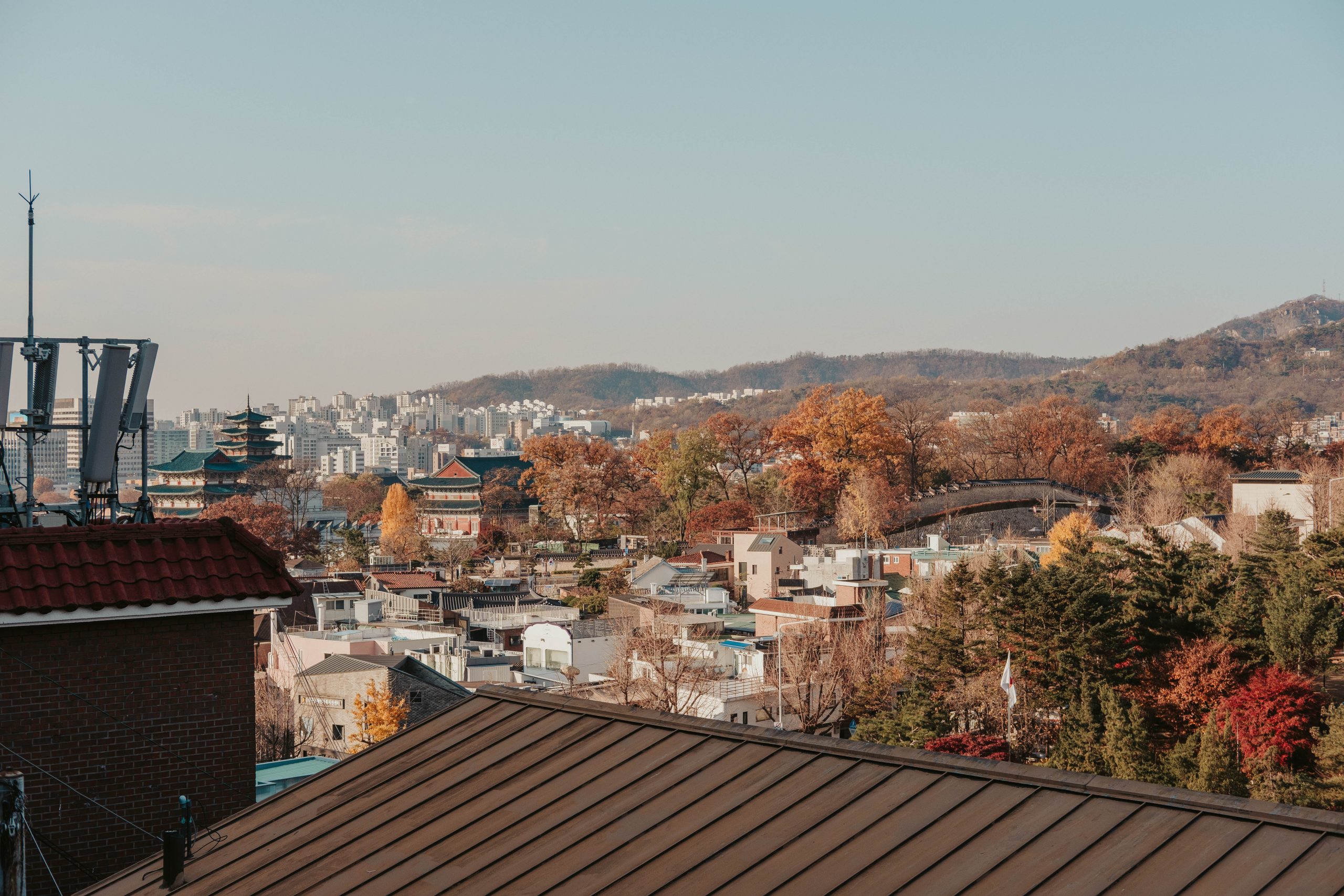
Best time to visit Seoul
The best time to visit Seoul is during the spring months of April, May, and June or the autumn months of September, October, and November. During these seasons, the weather is generally sunny and dry with comfortable temperatures, making it the perfect time for sightseeing and enjoying all the outdoor activities the country has to offer.
Spring in Seoul is generally mild and pleasant, with temperatures ranging from around 10 to 20 degrees Celsius (50 to 68 Fahrenheit) during the months of March to May. During the spring, the city is adorned with beautiful cherry blossoms and other spring flowers, which make for great sightseeing and photo opportunities. Spring is also a great time to experience some of Seoul’s cultural events, such as the Seoul Lotus Lantern Festival.
Autumn in Seoul is mostly mild and pleasant, with temperatures ranging from around 10 to 20 degrees Celsius (50 to 68 Fahrenheit) during the months of September to November. As the scorching heat and heavy rains of summer subside, Seoul transforms into a vibrant and lively destination, filled with colourful festivals and stunning landscapes. Autumn brings a stunning display of orange and red hues.
Winter in Seoul is usually cold and dry, with temperatures ranging from around freezing to just below freezing point. The city experiences its coldest temperatures from December to February, with occasional snowfall. Despite the cold weather, many people still come to visit during this time as it can be a great season to experience the city’s festive atmosphere. The streets and buildings are decorated with colourful lights and there are many winter events and festivals to enjoy. Some popular winter activities in Seoul include skiing and snowboarding at the nearby mountains, ice-skating at outdoor rinks, and visiting famous winter illuminations. It’s important to dress warmly, including layers, hat, gloves, scarfs and warm shoes.
Summer in Seoul is generally hot and humid, with temperatures ranging from around 25 to 35 degrees Celsius (77 to 95 Fahrenheit) during the months of June to August. The city is known for its high humidity, which can make the heat feel even more intense. Summer is a popular time for visitors to Seoul as there are many festivals and events taking place. Outdoor activities like hiking, visiting parks and swimming are also popular during this season.


Arrival & Getting Around Seoul
To get to Seoul, chances are you will arrive at Incheon Airport, which is the largest airport in South Korea.
To get to Seoul from the airport, I recommend getting the AREX train to Seoul station. This is an express train which you can take directly from the airport into Seoul’s main station.
The fare for a trip from Incheon International Airport to Seoul Station is 9,500 won for adults and 7,500 won for children. The duration of the journey is approximately 43 minutes for those departing from Terminal 1 and 51 minutes for those departing from Terminal 2, with a short stopover at Terminal 1.
Clear signs are guiding you to the AREX train station at the airport (they are large and orange).
The alternative is to take an All Stop Train, which takes 53 minutes and stops at ten major subway stations along the way.
When you get to the main Seoul station, follow the signs to the subway station to be able to quickly and effectively get to your hotel. Maps can be found on smartphone apps or on paper as well as information desk. All stations are announced in Korea, English and Chinese, with some in Japanese as well.
To take the subway, you will first need to purchase a ticket. The cost for a one-way trip is 1,350 won ($1.14), plus a 500 won deposit, which is refundable when you return the ticket to a refund machine at any station.
You can save 100 won if you use a refillable card such as T-Money, Cashbee or Korea Tour Card, which can be purchased at convenience stores and topped up at any subway ticket machine. These cards can also be used on taxis, buses, and subways, but they can only be refilled with cash.
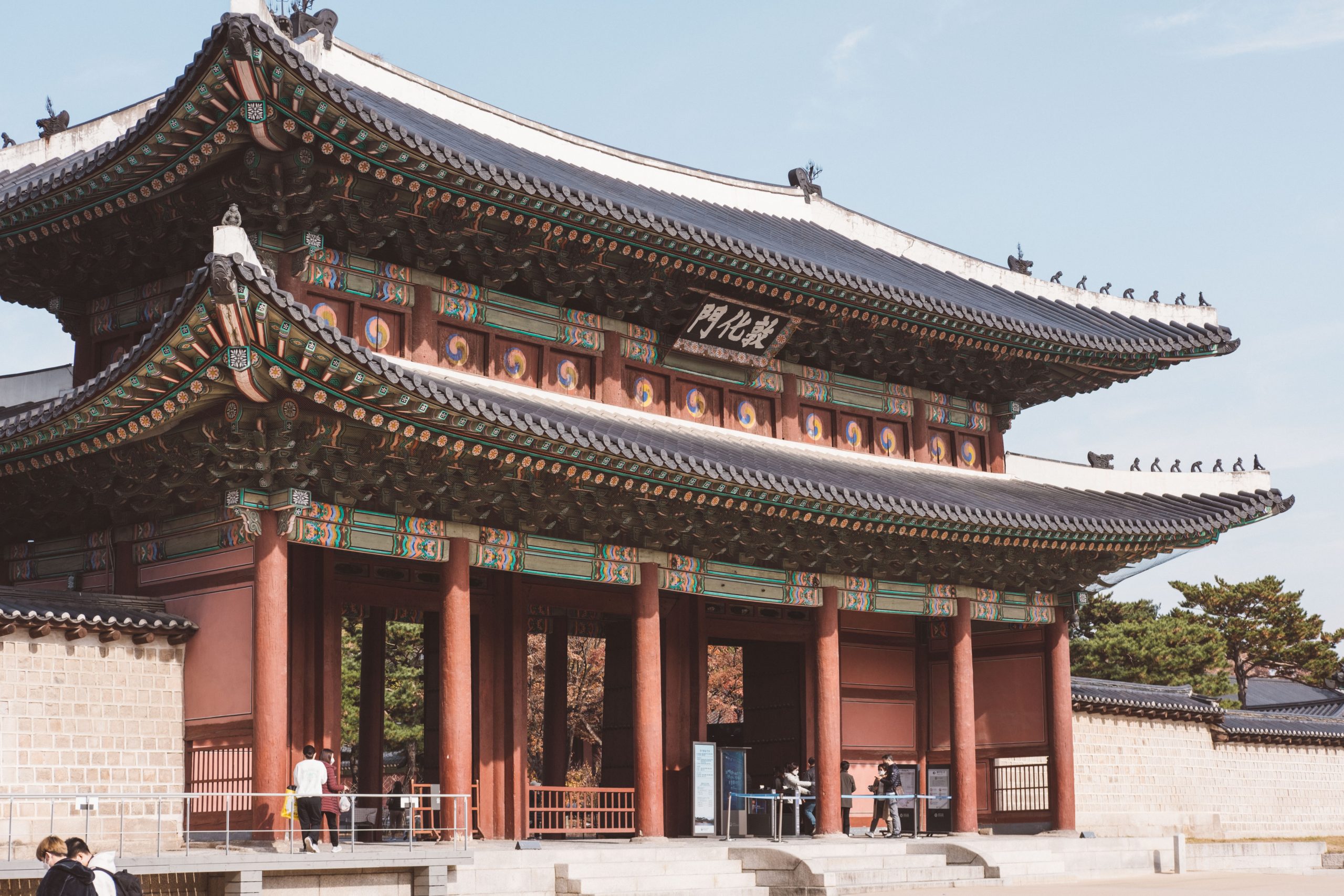
Basics of Visiting Seoul
- Learn a few basic Korean phrases: Even though many Koreans speak English, it’s always helpful to know a few basic Korean phrases such as hello: “안녕하세요” (annyeong-haseyo), thank you: “감사합니다” (gamsahamnida) and goodbye: “안녕히 가세요”(annyeong-hi gaseyo). This will be appreciated by locals and can be helpful when travelling.
- Respect local customs: Korea is a traditional country with a rich culture, so it’s important to be aware of and respect local customs. For example, when entering a temple or traditional home, it’s customary to take off your shoes. When visiting a palace or other historical site, dress modestly and avoid wearing shorts or revealing tops.
- Bring cash: While many places in Korea accept credit cards, it’s still essential to bring cash, as not all places accept cards and cash is still widely used in many places.
- Try the local food: Korean cuisine is delicious and diverse, from traditional dishes such as kimchi and bibimbap to street food such as tteokbokki and mandu. Be adventurous and try as many dishes as you can.
- Get a T-Money card: This is a prepaid smart card that can be used to pay for transportation, food, and shopping. It’s widely accepted and can be used on buses, subways, and taxis, as well as in many convenience stores and vending machines.
- Get the Discover Seoul Pass: Developed by the Seoul Tourism Organization and the Seoul Metropolitan Government, it offers free access to a selection of 35 tourist attractions and discounts on 29 more, all within a 24-hour period. This pass makes it easy to visit multiple attractions without the hassle of purchasing individual tickets. Order the Seoul Pass now.
- Prebook your pocket WIFI to have access to your internet everywhere you are. I recommend prebooking it online then, when you arrive at the Incheon airport, you can exchange your voucher for the physical device. This will help you get access to all the online maps while exploring Seoul. Order your pocket Wifi now.
- Note that Google Maps doesn’t work very well outside of South Korea. However, once you are in Seoul, you can access the maps and the directions just as you would otherwise in any other country.
- Keep an open mind: Korea is a unique country with a lot to offer, so keep an open mind and be prepared to experience new things.
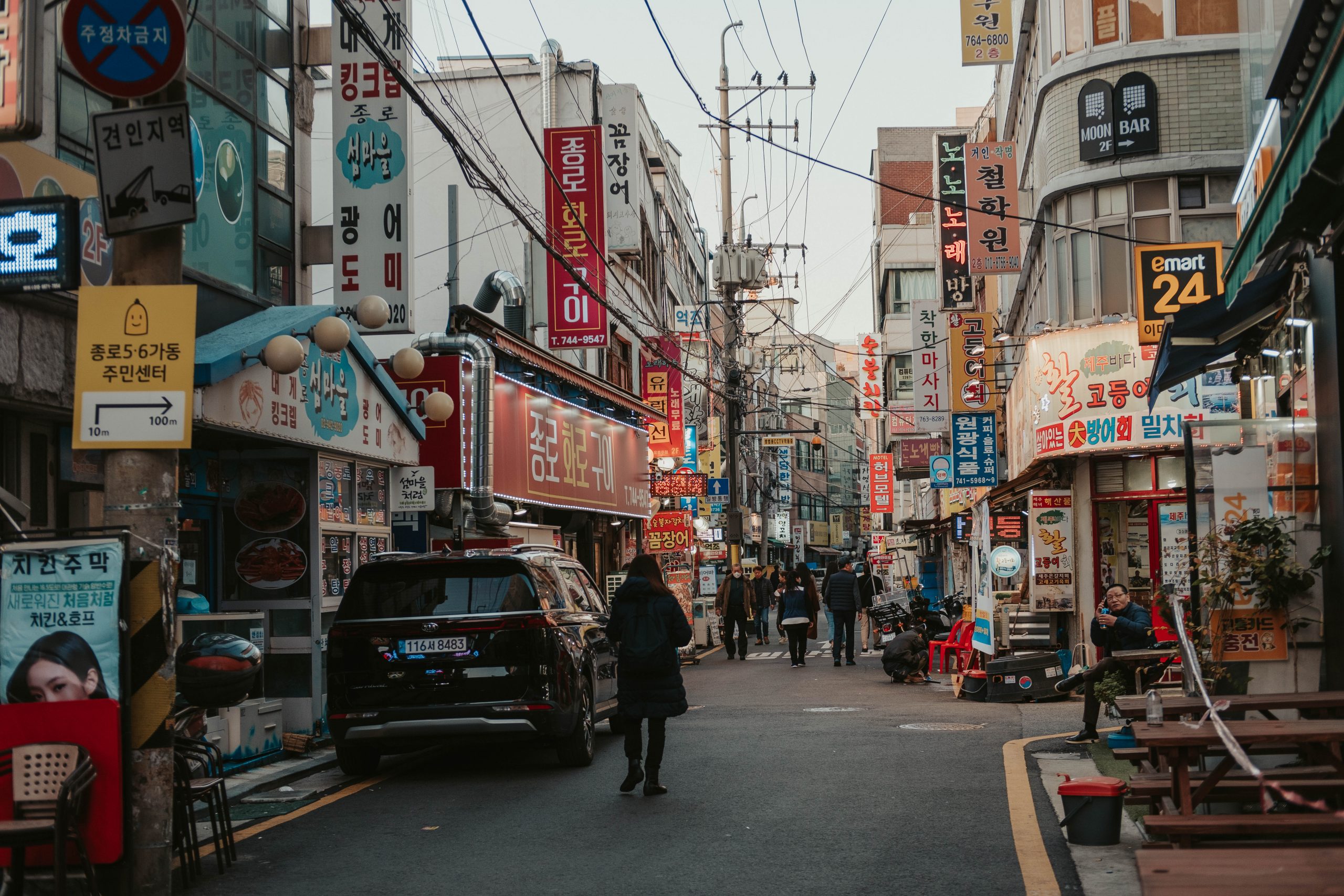
Where to stay in Seoul
We recommend Myeongdong area to stay in Seoul for first time visitors. It’s a great lively area with plenty of hotels, lots of street food and easy access to other parts of the city. It’s a great location for if you are new to Seoul.
Myeongdong is where we stayed in Seoul, and we had quick access to the subway to reach other attractions, but were also nearby many restaurants and street food markets. You can read more about where to stay in Seoul if you’re after an in-depth guide.
We stayed and recommend Pacific Hotel, which is located in front of the Myeongdong Subway Station Exit.3. The hotel is also very close to two really great Korean BBQ restaurants, Ziu BBQ and 중일회관 명동점 which we wholeheartedly recommend.

Is Seoul safe?
Seoul is a safe city for tourists and the crime rate in Seoul is low. Throughout my time in Seoul, I did not ever feel uncomfortable. The South Korean government has implemented strict laws to maintain a high level of safety for locals and visitors.
Seoul has a highly efficient public transportation system, and you’ll notice many CCTV cameras that help monitor and deter criminal activity.
Of course, as with any major city, make sure to take the usual precautions to protect yourself from petty crime such as pickpocketing and theft, especially in crowded areas like tourist hotspots, markets, and main stations.
During your trip to South Korea, it’s important to be aware of typhoons and earthquakes, as they can occur in the region.
The typhoon season usually runs from June to November, and you can monitor the progress of approaching storms on the Korea Meteorological Administration website. Make sure to follow any advice given by local authorities, or you can call 131 in Korea to get an accurate weather forecast in English.
While strong earthquakes are rare in South Korea, they can still occur. Most earthquakes in South Korea are relatively weak, between 2.0 and 5.0 on the Richter scale. Information on earthquakes is published on the Korea Meteorological Administration website.
To ensure your safety, familiarize yourself with the guidance from local authorities on safety procedures in case of an earthquake. You can also check the safety tips from the Seoul Metropolitan Government for more information on what to do in case of an earthquake.
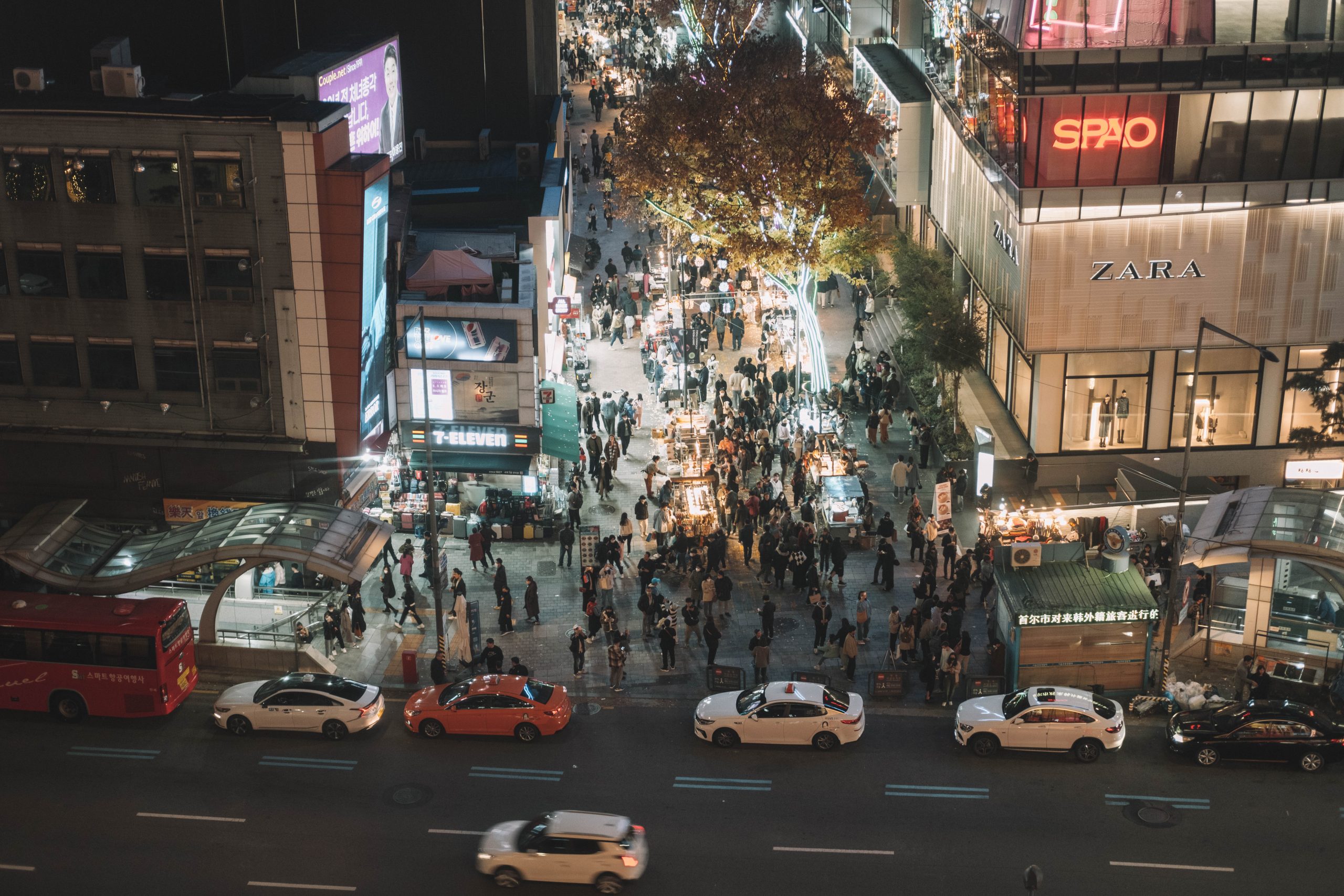
Is Seoul expensive?
Seoul can be an expensive city to visit, as prices are comparative to those in a major European city. However, Seoul is cheaper than Tokyo or Singapore.
The cost of living in Seoul is relatively high, with prices for accommodation, transportation, food, and entertainment being on par with other major international cities. However, there are many ways to enjoy Seoul on a budget.
Accommodation in Seoul can range from budget-friendly hostels and guest houses to luxury hotels, with prices varying greatly depending on the location.
Transportation in Seoul is affordable, with a great and reliable public transportation system that includes buses, subways, and trains.
There’s various and delicious food in Seoul, with so many great choices from street food to high-end restaurants. You can easily find a great Korean BBQ for 30,000 won per person for excellent quality meat.
Entertainment in Seoul ranges from free activities like visiting parks and temples, to more expensive options like guided tours.

As you can see, there is so much to see and do in Seoul. My itinerary is divided per area, so it’s easier to go from attraction to attraction and enjoy plenty of foods, drinks, and culture in-between.
Are you ready for your Seoul trip? Please let me know in the comments section below.


Frequently Asked Questions
How many days is enough for Seoul?
5 days is the right amount of time to spend in Seoul as a first timer. In five days you can see the main highlights and top tourist attractions, enjoy local food and experience the local culture.
Is 5 days enough for Seoul?
Yes, 5 days is enough to explore Seoul on your first visit, see the top tourist attractions, eat plenty of great food and even take a short day trip.


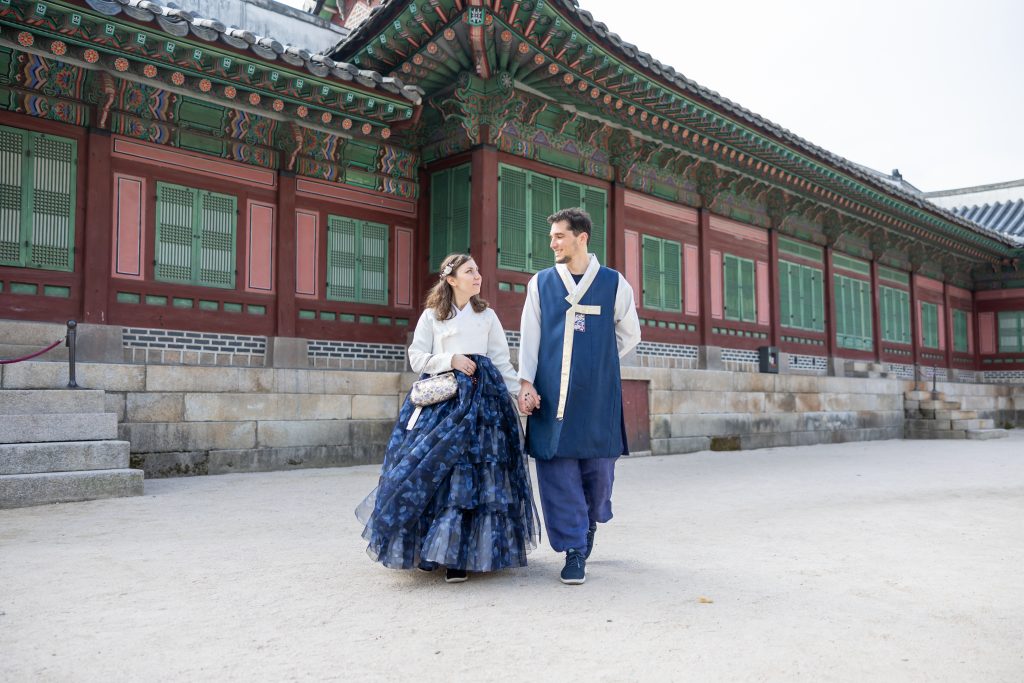
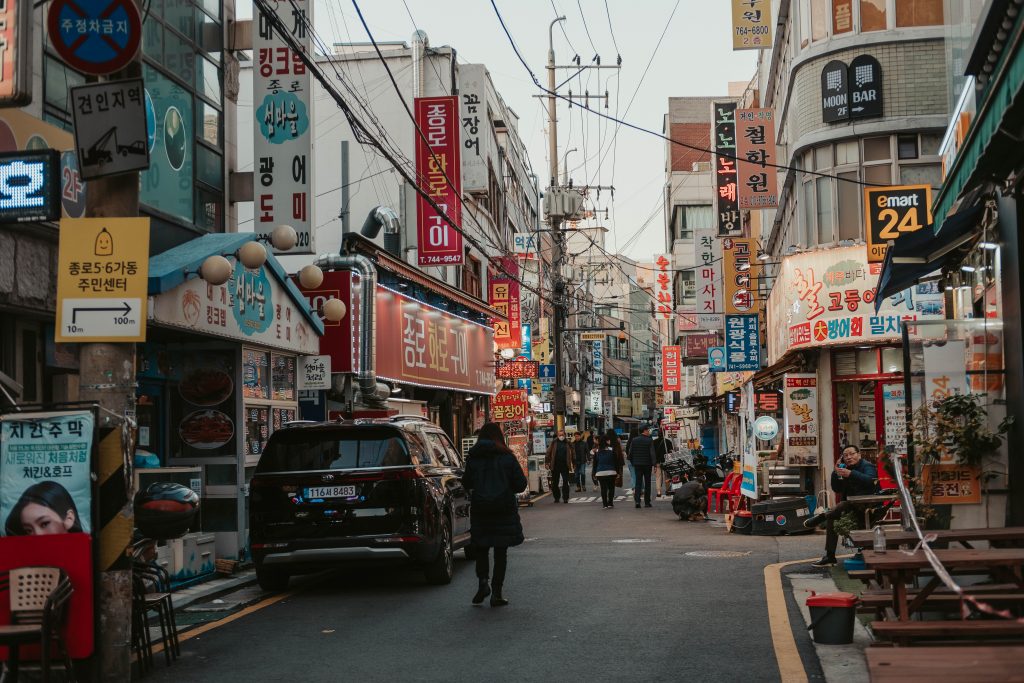



Leave a Reply